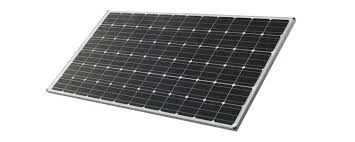monocrystalline solar panel size
Understanding Monocrystalline Solar Panel Sizes A Comprehensive Guide
In recent years, the push for renewable energy sources has intensified, with solar energy taking the forefront due to its sustainability and efficiency. Among the various types of solar panels available on the market, monocrystalline solar panels have gained significant popularity. This article explores the sizes of monocrystalline solar panels, shedding light on their dimensions, performance, and installation considerations.
What are Monocrystalline Solar Panels?
Monocrystalline solar panels are made from a single crystal structure, which allows for higher purity and efficiency in converting sunlight into electricity. Typically, these panels are more efficient than their polycrystalline counterparts, generating more power per square foot. This efficiency makes them a popular choice for both residential and commercial applications.
Standard Sizes of Monocrystalline Solar Panels
Monocrystalline solar panels come in various sizes, each with its unique specifications tailored to fit different energy needs and installation spaces. The most common dimensions in the market are
1. 60-Cell Panels These panels typically measure around 39 inches by 65 inches (approximately 1,000 mm by 1,650 mm). They usually produce between 250 to 370 watts of power. 60-cell panels are popular for residential installations due to their manageable size and efficiency.
2. 72-Cell Panels These larger panels are approximately 39 inches by 77 inches (about 1,000 mm by 2,000 mm) and generally generate between 350 to 450 watts. Their bigger size makes them an excellent choice for commercial projects or larger residential rooftops where space is less of an issue.
3. Variations Additionally, manufacturers may produce specialized monocrystalline panels, such as half-cell or bifacial panels, which have different dimensions and performance characteristics. Half-cell panels can enhance efficiency by reducing resistance, while bifacial panels can capture sunlight from both sides, further increasing energy output.
Factors Influencing the Size Selection
1. Space Availability The available space for installation is a significant factor in determining the size of the solar panels to be used. Homeowners with limited rooftop space may opt for smaller 60-cell panels, whereas larger establishments can benefit from the higher output of 72-cell panels.
monocrystalline solar panel size

2. Energy Needs The energy consumption requirements of the household or business will influence the number and size of the panels needed. Conducting an energy audit can help determine the appropriate size in terms of watts required to meet energy needs.
3. Aesthetic Considerations Some homeowners might prefer the look of smaller panels or specific configurations due to aesthetic preferences. The size and layout can significantly impact the overall appearance of the property.
4. Budget The cost of solar panels varies based on size and output. While larger panels may provide more energy at a better price-to-watt ratio, the upfront cost can be a deterrent for some. Budget considerations will play a crucial role in deciding panel size and type.
Installation Considerations
When installing monocrystalline solar panels, several factors related to size must be addressed
- Mounting Systems The size of the panels affects the type of mounting systems required. It’s essential to choose a system that can support the weight and dimensions of the panels securely.
- Orientation and Angle The efficiency of solar panels also depends on their orientation and the angle of installation. Proper alignment ensures maximum sunlight exposure, impacting overall energy generation.
- Local Regulations Different regions may have specific zoning laws and regulations regarding solar installations. It's crucial to check local guidelines that may dictate the allowable panel sizes or configurations.
Conclusion
Monocrystalline solar panels offer a highly efficient solution for individual energy needs. Understanding the different sizes and their implications can help homeowners and businesses make informed decisions about their solar energy investments. By considering factors such as space availability, energy requirements, aesthetics, and budget, one can determine the ideal panel size for their specific situation, paving the way towards a more sustainable energy future. As technology continues to evolve, we can only anticipate further advancements in solar panel efficiency and design, making renewable energy an increasingly accessible option for all.
-
String Solar Inverter: The High-Efficiency Solution for Smart Solar EnergyNewsJul.14,2025
-
Revolutionizing Rooftop Energy with the Power of the Micro Solar InverterNewsJul.14,2025
-
Power Independence with Smart Off Grid Solar Inverter SolutionsNewsJul.14,2025
-
On Grid Solar Inverter: Powering the Future with Smart Grid IntegrationNewsJul.14,2025
-
Monocrystalline Solar Panels: High-Efficiency Power for the Future of Clean EnergyNewsJul.14,2025
-
Bifacial Solar Panel: A Smarter Investment for Next-Generation Energy SystemsNewsJul.14,2025







